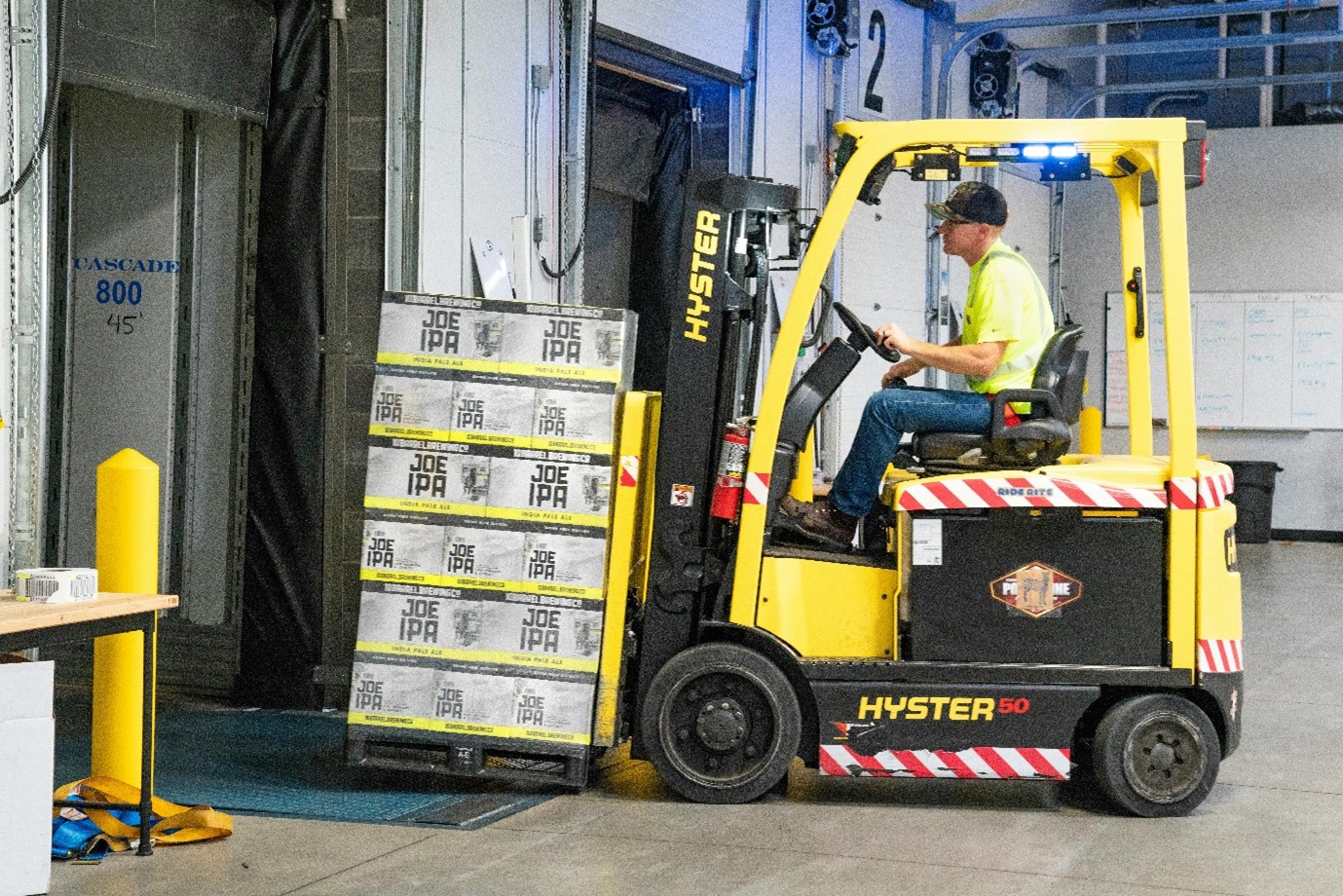

What Are the Different Types of Material Handling Equipment?
Material Handling Equipment refers to machines or tools that have been designed to transport, process, store or package materials. Examples of this would include forklift trucks, conveyors and pallet trucks etc.
Using material handling equipment is good for productivity and efficiency and can streamline tasks that would otherwise need a significant amount of manual effort. It saves time and money.
Mascus is a leading marketplace for heavy machinery and industrial equipment and provides a platform for buying and selling this type of equipment. We have taken a look at the different types of material handling equipment to help businesses make informed decisions.
Different types of Material Handling Equipment
Material handling equipment can be broadly divided into four categories:
- Storage and handling equipment
- Industrial truck
- Bulk Material Handling Equipment
- Automated Systems
Each category consists of a range of tools and machinery suitable for specific needs.
Storage Handling Equipment is needed for keeping materials organised and accessible. These systems are used in warehousing, manufacturing, and distribution centres. Some examples might include:
- Shelving and racking – Where space is valuable, vertical storage solutions are needed, and pallet racks, cantilever racks and mezzanine systems can provide these.
- Bins and Containers – These are used for storing smaller items or components.
- Conveyers – Belt, roller, and chain conveyors are used to help move goods between storage areas.
- Dock equipment – Dock boards, levellers and seals enable the smooth loading and unloading of goods.
These types of equipment make sure that materials are stored safely and are available for shipping or production.
Industrial Trucks are machines designed for moving goods around within a facility. They need to be versatile for their purpose and they range from manual tools to motorised vehicles with each have a specific task. Common types are:
- Forklift Trucks – These are essential for lifting and moving pallets and very heavy items. Forklifts come in various different types such as counterbalance forklifts, reach trucks and side loaders.
- Pallet Trucks – These are ideal for transporting pallets over short distances and can be manual or powered.
- Order Pickers – These help reach items from high shelves.
- Tow Tractors – Used for pulling multiple load carriers in warehouses or on assembly lines.
- Platform Trucks – A simple flatbed vehicle used to transport bulky or heavy goods.
Industrial trucks are the foundation of material handling operations due to their versatility and labour-saving benefits.
Bulk Material Handling Equipment is used to transport and process materials like grain, powders, minerals, and liquids. These machines are crucial for load handling. Examples include:
- Conveyors – Screw, pneumatic, and bucket conveyors are designed to move bulk materials.
- Hoppers and Silos – These are storage solutions for bulk materials which allow for controlled dispensing.
- Stackers and Reclaimers – These are machines used to pile bulk materials or retrieve them from storage.
- Dump Trucks – Large vehicles used for transportation of bulk materials over long distances.
- Cranes – Used in construction and port operations, cranes lift and transport heavy or bulky loads.
Bulk material handling equipment makes the movement and storage of huge quantities of materials manageable.
Automated Systems have revolutionised material handling, making operations more precise, efficient and scalable. They cut the need for manual labour and improve safety. Some systems may include:
- Automated Guided Vehicles (AGVs) – Driverless vehicles which can be programmed to transport goods within your facility.
- Automated Storage and Retrieval Systems (AS/RS) – These are robotic systems that store and retrieve goods in warehouses.
- Robotic Arms – These are used in manufacturing and packaging, and handle materials with precision.
- Sortation Technology and Systems – Advanced conveyors and scanners that sort items based on size, weight, and/or destination.
For large scale operations where time and accuracy are paramount, automated systems are key in material handling.
Choosing the Right Material Handling Equipment
Deciding which is the right equipment for you needs careful consideration and can depend on several factors:
- Type of Materials – the size, weights and nature of the materials to be handled.
- Facility Layout – Workflow requirements and space considerations.
- Volume of Operations – High volume operations might require automated systems, whilst smaller operations may only need manual tools.
- Budget – Costs can vary widely, from affordable manual equipment to costly high end automated systems needing significant investment.
- Safety Requirements – Ensuring the equipment is safe to use and meets safety standards is critical.
Consulting with experts and reviewing detail specifications can simplify the process.
The Importance of Maintenance
Proper and regular maintenance is essential for the longevity and efficiency of material handling equipment. Routine inspections and timely repairs can prevent breakdowns and reduce downtime. Track and schedule servicing regularly.
Why Choose Us?
Mascus is a trusted marketplace for buying and selling Material Handling Equipment, as well as Agriculture, Transportation, Construction, Forestry, and Groundcare Equipment. With an extensive range of forklifts, tractors, conveyors, and other automated systems, we can connect buyers and sellers worldwide. Our site’s user-friendly interface, detailed listings, and expert support make us the go-to choice for businesses looking to optimize their operations.



